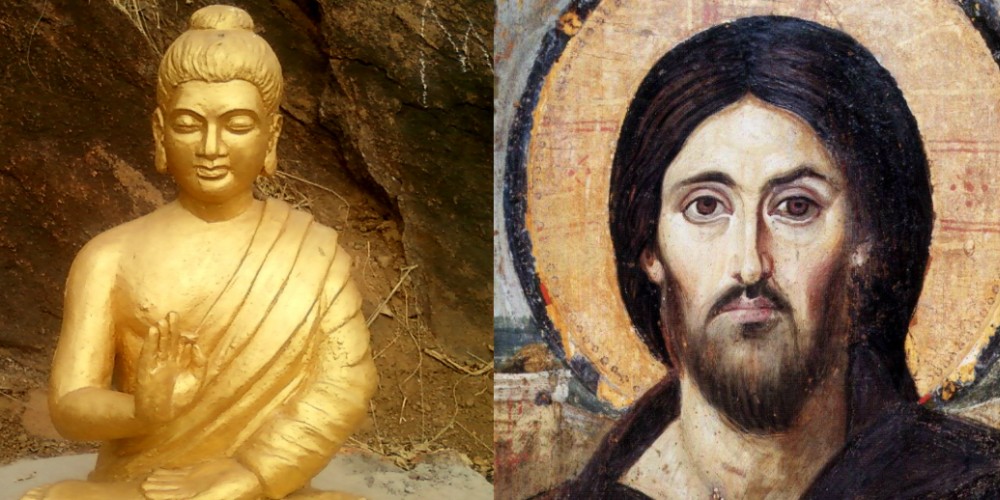The Buddha and the Pantocrator
Buddhist statues and Orthodox icons aren't always symmetrical. Neither are we.

I’m sitting in front of my computer drinking from a knobbly, lopsided Japanese tea bowl, with two new books on either side of my keyboard. At my left hand is William Empson’s The Face of the Buddha, edited by Buddhist scholar-monk Rupert Arrowsmith from a long-lost manuscript. At my right hand is The Art of Seeing: Paradox and Perception in Orthodox Iconography, by the Orthodox monk-scholar Fr. Maximos Constas. The books are mirror opposites; I wish the authors could meet.
Many consider William Empson the best critic of his generation. His first book, Seven Types of Ambiguity, which he began at the tender age of 22, plumbed the English poetic canon for tantalizing examples of verbal ambiguity—cases in which a word or expression yields alternative meanings, to the puzzlement of the attentive critic and the delight of the deep reader. Empson was a figure of ambiguity himself, a profound exegete of Christian literature and a passionate anti-Christian. He loved to unearth evidence that his favorite English authors were conflicted about their faith, that the ambiguities in Paradise Lost were symptomatic of Milton’s struggle to make a tyrannical God seem worthy of worship, that the double meaning of a word as innocuous as buckle revealed Gerard Manley Hopkins’s mixed feelings about his Jesuit calling, that George Herbert’s poem “The Sacrifice” exposed a two-faced God: vindictive judge and loving redeemer.
What had promised to be a spectacular academic career ran aground early on when a servant found contraceptives in Empson’s college rooms and the young prodigy was expelled in disgrace. But the exile proved fruitful; after a stint among the Bloomsbury literati, Empson found teaching jobs in Japan and China. Here, amid the gracious statues of Buddhas and bodhisattvas, he discovered a type of ambiguity that was free from neuralgic Christian associations. Studying the Kudara Kannon in Nara’s Hōryū-ji Temple, he marveled at the “puzzlement and good humour” on the left side of the face and the “birdlike innocence and wakefulness” on the right. He became fascinated to the point of obsession, crisscrossing the Asian continent in search of statues that shared the same secret: “the faces all seem to be asymmetrical in the same way, as if the artists were working on a theory.” To test the theory, Empson would photograph a Buddha’s face, split the photograph down the middle, reverse one side, and create two mirrored composites. The asymmetries were unmistakable. One face appeared sardonic on the right side, mystical on the left; another cunning on the right side, placid on the left; yet another “masculine and foxy” on the right side, plaintive on the left. Overall, the asymmetries created an impression of ironic wisdom coupled with compassion, and marked by a certain “coolness” toward the supernatural. “I think Buddhism much better than Christianity,” Empson wrote, “because it managed to get away from the Neolithic craving to gloat over human sacrifice.”




